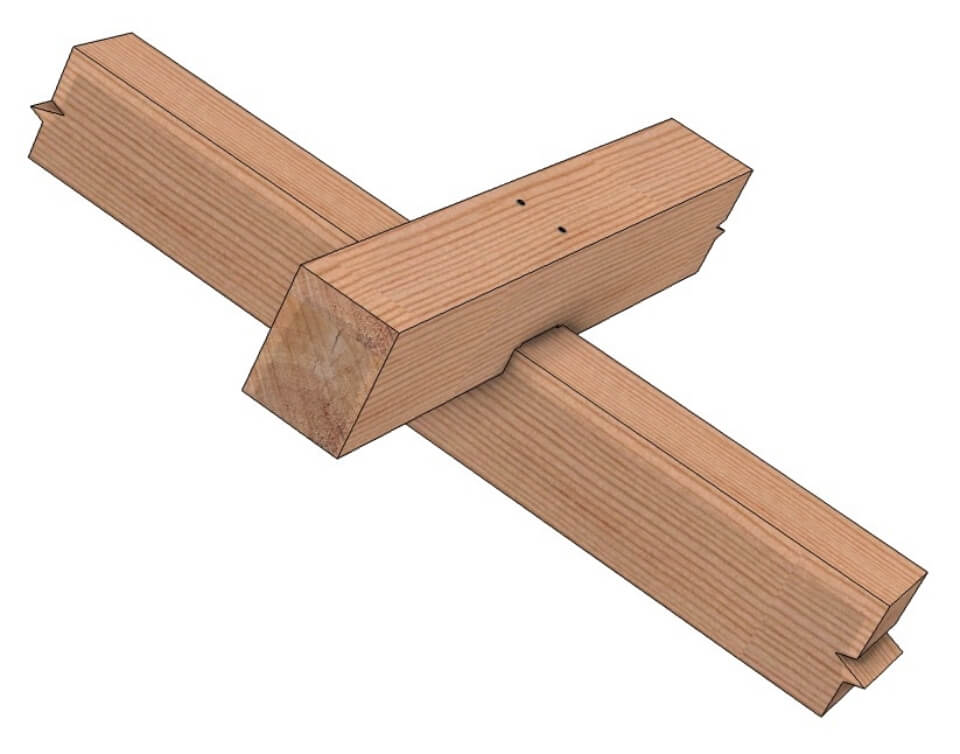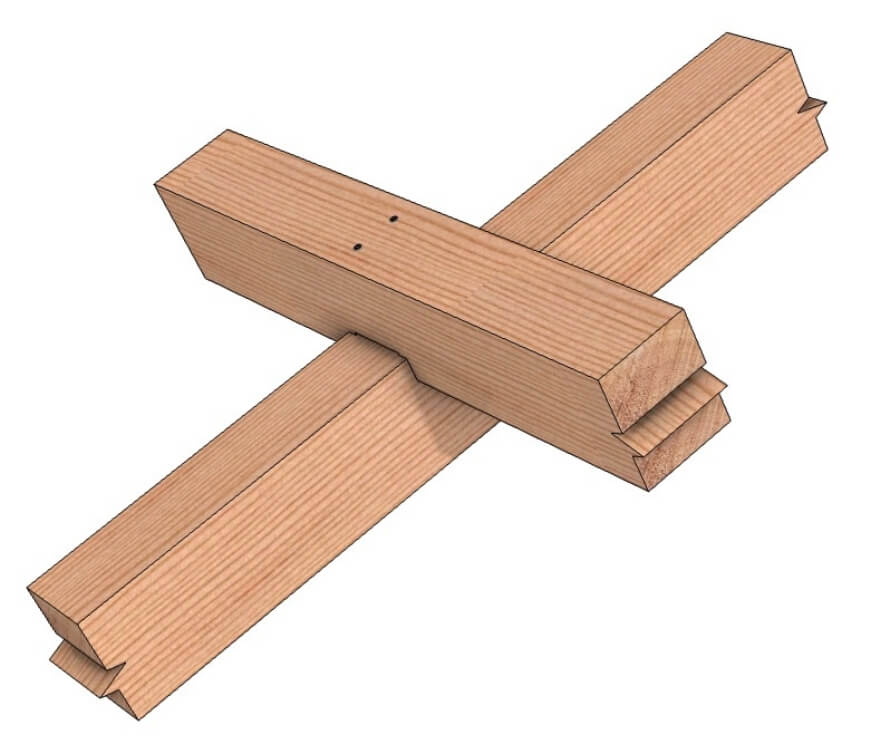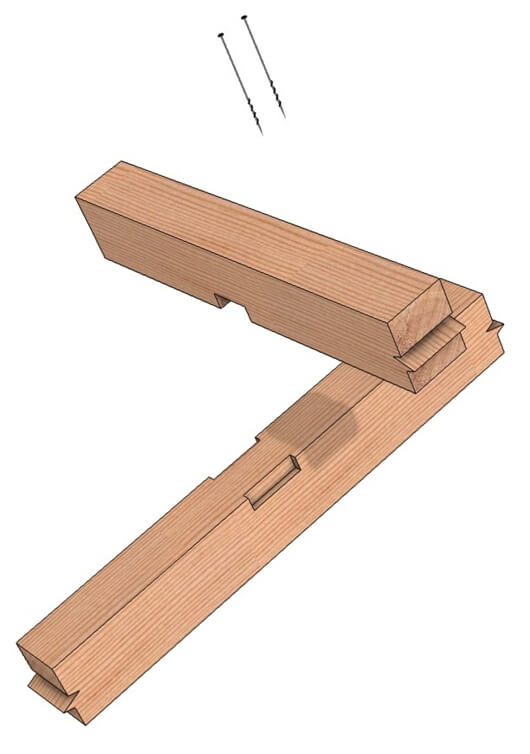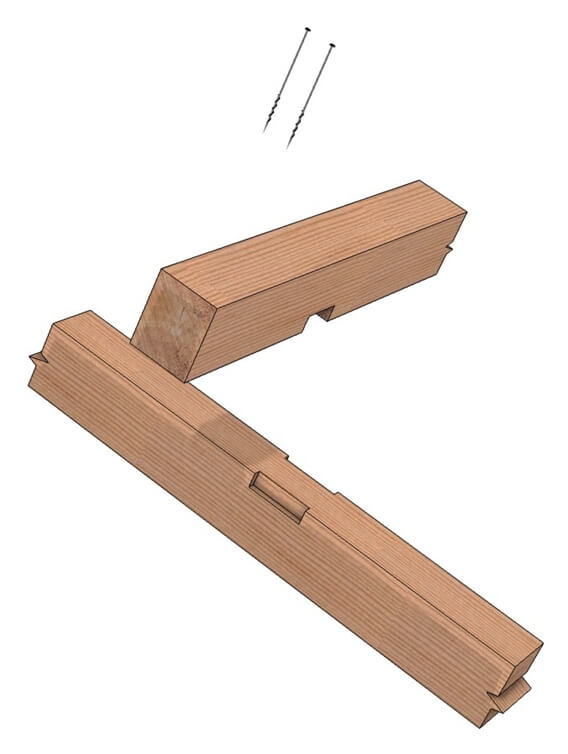Purlins help to form and strengthen the roof framing in a structure, and they support the roof decking or sheathing. They run horizontally, parallel with the ridge of the timber frame. There are three basic types of purlins: purlin plate, principal purlin, and common purlin.
Purlin plates support the rafters near the middle of their span, and are supported by posts. They allow for longer spans and wider structures than the rafters could support without purlins. Principal purlins support common rafters and are connected to principal rafters. Common purlins pass over the top of principal rafters and are intended to carry the roof sheathing.
Where the common purlins cross over principal rafters, we show here a nice technique to secure the connection and lessen the height above the rafter. Called a notched purlin, it is made by cutting out seats on both sides of the rafter. Then the purlin is notched out similar to a lap joint, all the way through to the same depth as the cut on the rafter. This allows it to settle down into the cutouts on the rafter. This joint is further secured with structural screws.




If you have 8X8 principal rafters appx. 24 ft long 12 ft oc (5 bents) and these are supported by a queen post and collar tie for each bent. What would be the spacing between each purlin if I used 6X6. Just your first thought. I’m going to send you my plans and probably end this research and use your service #3. Ive done beam deflection calculations at various distances and get deflections within specs. I plan on using barrel bolts. Great website by the way. Thanks for bothering with me.
Ron in NH
Ron, thank you for your comment on the website. I’m afraid an engineer (and more information about your plan) would be needed to answer your question. You might want to send your plans and questions to projects@timberframehq.com